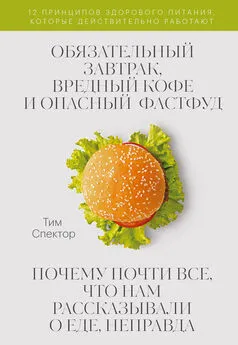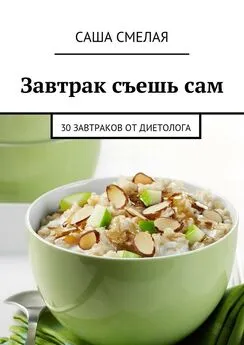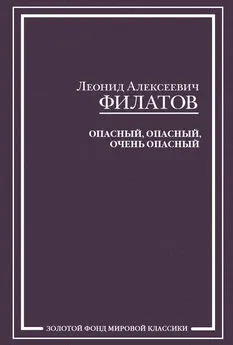Тим Спектор - Обязательный завтрак, вредный кофе и опасный фастфуд
- Название:Обязательный завтрак, вредный кофе и опасный фастфуд
- Автор:
- Жанр:
- Издательство:Манн, Иванов и Фербер
- Год:2021
- Город:Москва
- ISBN:9785001697381
- Рейтинг:
- Избранное:Добавить в избранное
-
Отзывы:
-
Ваша оценка:
Тим Спектор - Обязательный завтрак, вредный кофе и опасный фастфуд краткое содержание
Тим Спектор провел беспрецедентное исследование, в результате которого понял, насколько необоснованны большинство глубоко укорененных в нашем сознании представлений о еде. В каждой главе своей книги он объясняет, почему почти всё, что нам рассказывали о еде, неправда.
Прочитав его книгу, вы сможете полностью переосмыслить свое отношение к еде и научитесь формировать собственный индивидуальный рацион на основе научных рекомендаций.
Обязательный завтрак, вредный кофе и опасный фастфуд - читать онлайн бесплатно ознакомительный отрывок
Интервал:
Закладка:
279
Johnston C. S. Commercially available gluten-free pastas elevate postprandial glycemia in comparison to conventional wheat pasta in healthy adults: a double-blind randomized crossover trial // Food Funct. 2017. Vol. 8. No. 9. Pp. 3139–3144.
280
Croall I. D. Gluten does not induce gastrointestinal symptoms in healthy volunteers: a double-blind randomized placebo trial // Gastroenterology. 2019. Vol. 157. Pp. 881–883.
281
Roager H. M. Whole grain-rich diet reduces body weight and systemic low-grade inflammation without inducing major changes of the gut microbiome: a randomised cross-over trial // Gut. 2019. Vol. 68. Pp. 83–93.
282
UK exercise guidelines: nhs.uk/live-well/exercise/(30 May 2018); US exercise guidelines: health.gov/paguidelines/(2019)
283
Tigbe W. W. Time spent in sedentary posture is associated with waist circumference and cardiovascular risk // International Journal of Obesity. 2017. Vol. 41. No. 5. Pp. 689–696.
284
Fujita H. Physical activity earlier in life is inversely associated with insulin resistance among adults in Japan // Journal of Epidemiology. 2019. Vol. 29. No. 2. Pp. 57–60.
285
Pontzer H. Hunter-gatherer energetics and human obesity // PLOS ONE. 2012. Vol. 7. No. 7. P. e40503.
286
Casanova N. Metabolic adaptations during negative energy balance and potential impact on appetite and food intake // Proceedings of the Nutrition Society. 2019. Vol. 78. No. 3. Pp. 279–289.
287
Thomas D. M. Why do individuals not lose more weight from an exercise intervention at a defined dose? An energy balance analysis // Obesity Reviews. 2013. Vol. 13. No. 10. Pp. 835–847.
288
Mostrous A. Coca-Cola spends £10m to counter links with obesity // The Times. 18 December 2015; Gornall J. Sugar: spinning a web of influence // BMJ. 2015. Vol. 350. P. h231.
289
Nestle M. Unsavory Truth: How Food Companies Skew the Science of What We Eat. Basic Books, 2018.
290
Noakes T. D. Lobbyists for the sports drink industry: example of the rise of “contrarianism” in modern scientific debate // Br. J. of Sports Med. 2007. Vol. 41. No. 2. Pp. 107–109.
291
Burke L. M. Swifter, higher, stronger: What’s on the menu? // Science. 2018. Vol. 362. No. 6416. Pp. 781–787.
292
Chekroud S. R. Association between physical exercise and mental health in 1.2 million individuals in the USA between 2011 and 2015 // Lancet Psychiatry. 2018. Vol. 5. Pp. 739–746.
293
Gustafson C. R. Exercise and the timing of snack choice: healthy snack choice is reduced in the post-exercise state // Nutrients. 2018. Vol. 10. No. 12. P. 1941.
294
Флуоксетин (прозак) — популярный антидепрессант, селективный ингибитор обратного захвата серотонина. Прим. науч. ред.
295
Jakubovski E. Systematic review and meta-analysis: dose-response relationship of selective-serotonin reuptake inhibitors in major depressive disorder // American Journal of Psychiatry. 2016. Vol. 173. No. 2. Pp. 174–183.
296
Lai J. S. A systematic review and meta-analysis of dietary patterns and depression in community-dwelling adults // American Journal of Clinical Nutrition. 2014. Vol. 99. No. 1. Pp. 181–197; Recchia D. Associations between long-term adherence to healthy diet and recurrent depressive symptoms in Whitehall II Study // European Journal of Nutrition. 2019. Vol. 1. Pp. 1–11.
297
Reynolds C. F. Early intervention to preempt major depression in older black and white adults // Psychiatric Services. 2014. Vol. 65. No. 6. Pp. 765–773.
298
Jacka F. N. A randomised controlled trial of dietary improvement for adults with major depression (the “SMILES” trial) // BMC Medicine. 2017. Vol. 15. No. 1. P. 23.
299
Firth J. The effects of dietary improvement on symptoms of depression and anxiety: a meta-analysis of randomized controlled trials // Psychosomatic Medicine. 2019. Vol. 81. No. 3. Pp. 265–280; Mizuno S. Bifidobacterium-rich fecal donor may be a positive predictor for successful fecal microbiota transplantation in patients with irritable bowel syndrome // Digestion. 2017. Vol. 96. No. 1. Pp. 29–38.
300
Sánchez-Villegas A. Mediterranean dietary pattern and depression: the PREDIMED randomized trial // BMC Medicine. 2013. Vol. 11. P. 208.
301
Valles Colomer M. The neuroactive potential of human gut microbiota in quality of life and depression // Nature Microbiology. 2019. Vol. 4. Pp. 623–632.
302
Yano J. M. Indigenous bacteria from the gut microbiota regulate host serotonin biosynthesis // Cell. 2015. Vol. 161. No. 2. Pp. 264–276.
303
Lukić I. Antidepressants affect gut microbiota and Ruminococcus flavefaciens is able to abolish their effects on depressive-like behavior // Translational Psychiatry. 2019. Vol. 9. No. 1. P. 133.
304
Walters M. J. Associations of lifestyle and vascular risk factors with Alzheimer’s brain biomarkers during middle age // BMJ OPEN. 2018. Vol. 8. No. 11. P. e023664.
305
Akbaraly T. Association of long-term diet quality with hippocampal volume: longitudinal cohort study // American Journal of Medicine. 2018. Vol. 131. No. 11. Pp. 1372–1381.
306
Setti S. E. Alterations in hippocampal activity and Alzheimer’s disease // Translational Issues in Psychological Science. 2018. Vol. 3. No. 4. Pp. 348–356.
307
Глутаминовая кислота (глутомат) — возбуждающий нейромедиатор. ГАМК — гамма-аминомасляная кислота — тормозной нейромедиатор нервной системы млекопитающих. Прим. науч. ред.
308
Zheng P. The gut microbiome from patients with schizophrenia modulates the glutamate-glutamine-GABA cycle and schizophrenia-relevant behaviors in mice // Science Advances. 2019. Vol. 5. No. 2. P. eaau8317.
309
Argou-Cardozo I. Clostridium bacteria and autism spectrum conditions: a systematic review and hypothetical contribution of environmental glyphosate Levels // Medical Sciences. 2018. Vol. 6. No. 2. P. 29.
310
Kang D. W. Differences in fecal microbial metabolites and microbiota of children with autism spectrum disorders // Anaerobe. 2018. Vol. 49. Pp. 121–131.
311
Mizuno S. Bifidobacterium-rich fecal donor may be a positive predictor for successful fecal microbiota transplantation in patients with irritable bowel syndrome // Digestion. 2017. Vol. 96. No. 1. Pp. 29–38.
312
Butler M. I. From isoniazid to psychobiotics: the gut microbiome as a new antidepressant target // British Journal of Hospital Medicine. 2019. Vol. 80. No. 3. Pp. 139–145.
313
Jacka F. N. Maternal and early postnatal nutrition and mental health of offspring by age 5 years: a prospective cohort study // J. Acad. Child & Adol. Psych. 2013. Vol. 52. No. 10. Pp. 1038–1047.
314
Jacka F. Brain Changer: How diet can save your mental health. Yellow Kite, 2019.
315
Saylor A. What’s wrong with the tap? Examining perceptions of tap water and bottled water at Purdue University // Environmental Management. 2011. Vol. 48. No. 3. Pp. 588–601.
316
Lantagne D. Household water treatment and cholera control // Journal of Infectious Diseases. 2018. Vol. 218. No. 3. Pp. s147–s153.
317
McCartney M. Waterlogged? // BMJ. 2011. Vol. 343. P. d4280.
318
Rosario-Ortiz F. How do you like your tap water? // Science. 2016. Vol. 351. No. 6267. Pp. 912–914.
319
Brezina E. Investigation and risk evaluation of the occurrence of carbamazepine, oxcarbazepine, their human metabolites and transformation products in the urban water cycle // Environmental Pollution. 2017. Vol. 225. Pp. 261–269.
320
Spector T. Identically Different. Weidenfeld & Nicolson, 2012.
321
Wagner M. Identification of putative steroid receptor antagonists in bottled water // PLOS ONE. 2013. Vol. 8. No. 8. P. e72472.
322
Huo W. Maternal urinary bisphenol A levels and infant low birth weight: a nested case-control study of the Health Baby Cohort in China // Environmental International. 2015. Vol. 85. Pp. 96–103; Gao H. Bisphenol A and hormone-associated cancers: current progress and perspectives // Medicine. 2015. Vol. 94. No. 1. P. e211.
323
EFSA. Bisphenol A: new immune system evidence useful but limited // EFSA Reports. 13 October 2016.
324
Iheozor-Ejiofor Z. Water fluoridation for the prevention of dental caries // Cochrane Database of System Reviews. 2015. Vol. 6. P. CD010856.
325
Jambeck J. R. Marine pollution. Plastic waste inputs from land into the ocean // Science. 2015. 13. Vol. 347. No. 6223. Pp. 768–771.
326
Ryan P. G. Monitoring the abundance of plastic debris in the marine environment // Proceedings Transactions Royal Soc. B. 2009. Vol. 364. Pp. 1999–2012.
327
Bartoshuk L. M. NaCl thresholds in man: thresholds for water taste or NaCl taste? // Journal of Comparative and Physiological Psychology. 1974. Vol. 87. No. 2. Pp. 310–325.
328
alcohol.org/guides/global-drinking-demographics/(2019).
329
Lachenmeier D. W. Comparative risk assessment of alcohol, tobacco, cannabis and other illicit drugs using the margin of exposure approach // Scientific Reports. 2015. Vol. 5. P. 8126.
330
Bruha R. Alcoholic liver disease // World Journal of Hepatology. 2012. Vol. 4. No. 3. Pp. 81–90; Jordaan G. P. Alcohol-induced psychotic disorder: a review // Metabolic Brain Disease. 2014. Vol. 29. No. 2. Pp. 231–243.
331
alcohol.org/guides/global-drinking-demographics/(2019).
332
St Leger A. S. Factors associated with cardiac mortality in developed countries with particular reference to the consumption of wine // Lancet. 1979. Vol. 1. No. 8124. Pp. 1017–1020; Di Castelnuovo A. Alcohol dosing and total mortality in men and women: an updated meta-analysis // Archives of Internal Medicine. 2006. Vol. 166. No. 22. Pp. 2437–2445.
333
gov.uk/government/news/new-alcohol-guidelines-show-increased-risk-of-cancer(8 January 2016).
334
Xi B. Relationship of alcohol consumption to all-cause, cardiovascular, and cancerrelated mortality in US adults // J. American College of Cardiology. 2017. Vol. 70. No. 8. Pp. 913–922.
Читать дальшеИнтервал:
Закладка:










